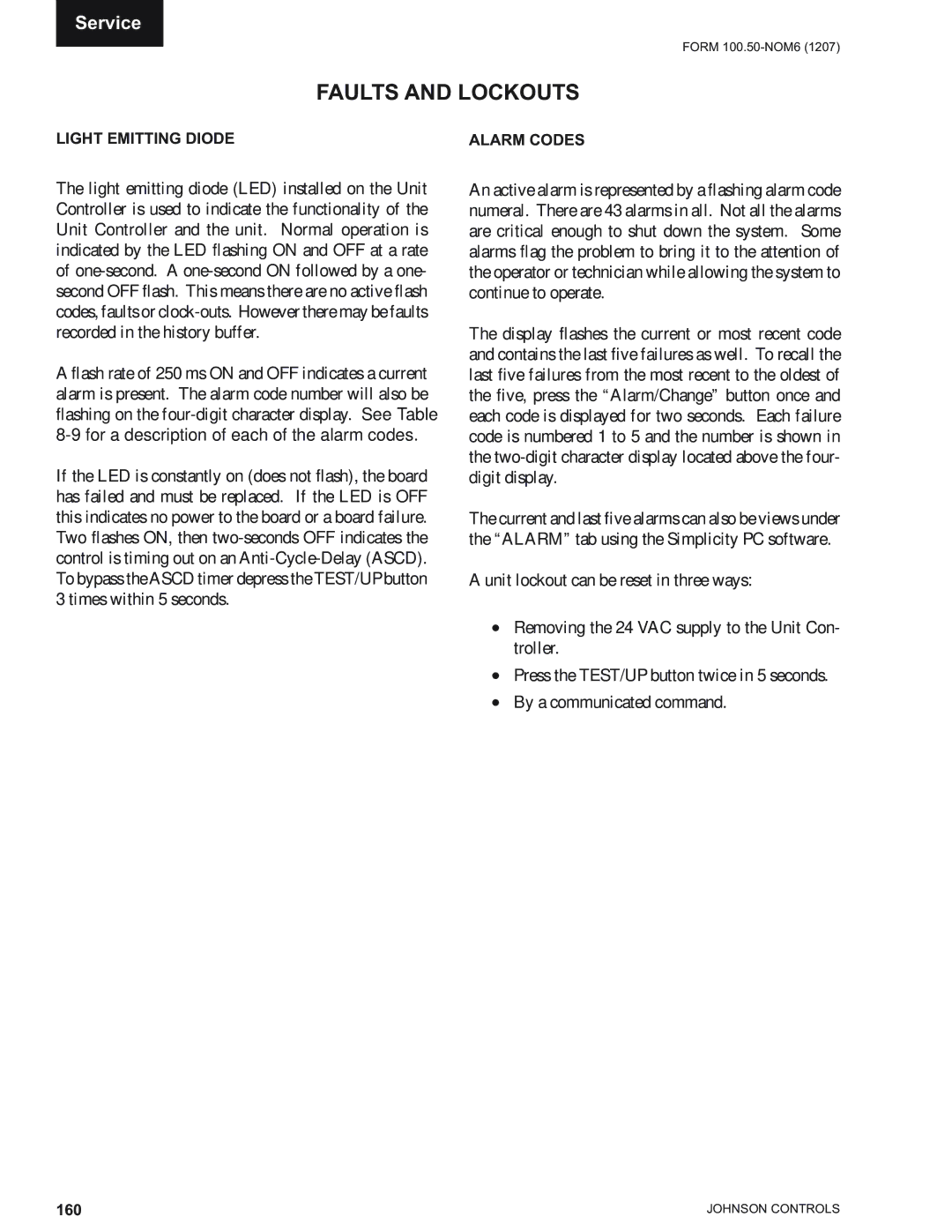Service
FORM
FAULTS AND LOCKOUTS
LIGHT EMITTING DIODE | ALARM CODES |
The light emitting diode (LED) installed on the Unit Controller is used to indicate the functionality of the Unit Controller and the unit. Normal operation is indicated by the LED flashing ON and OFF at a rate of
A flash rate of 250 ms ON and OFF indicates a current alarm is present. The alarm code number will also be flashing on the
If the LED is constantly on (does not flash), the board has failed and must be replaced. If the LED is OFF this indicates no power to the board or a board failure. Two flashes ON, then
An active alarm is represented by a flashing alarm code numeral. There are 43 alarms in all. Not all the alarms are critical enough to shut down the system. Some alarms flag the problem to bring it to the attention of the operator or technician while allowing the system to continue to operate.
The display flashes the current or most recent code and contains the last five failures as well. To recall the last five failures from the most recent to the oldest of the five, press the “Alarm/Change” button once and each code is displayed for two seconds. Each failure code is numbered 1 to 5 and the number is shown in the
The current and last five alarms can also be views under the “ALARM” tab using the Simplicity PC software.
A unit lockout can be reset in three ways:
•Removing the 24 VAC supply to the Unit Con- troller.
•Press the TEST/UP button twice in 5 seconds.
•By a communicated command.
160 | JOHNSON CONTROLS |
